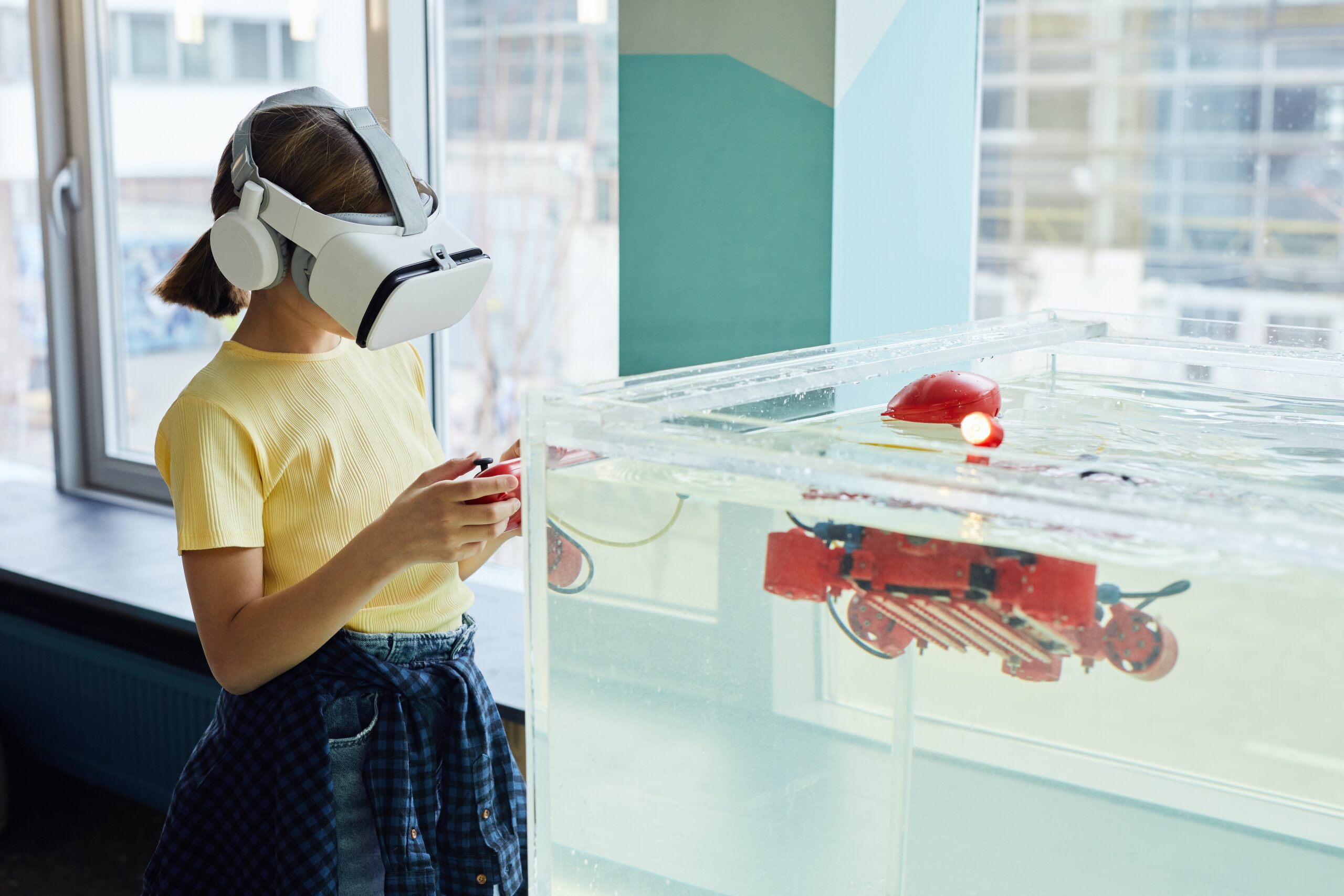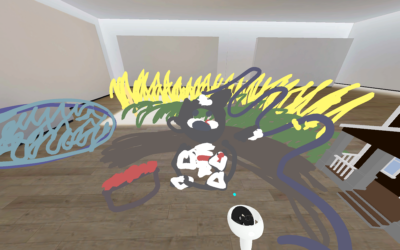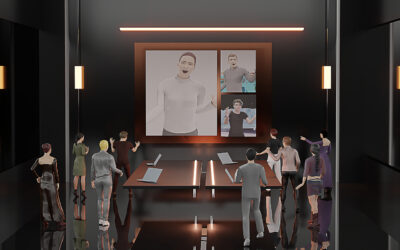Image courtesy of Vanessa Loring.
On the 20th of October, the XR ERA community came together to discuss the fundamental, ever-relevant issues of accessibility and digital literacy, framing these terms within the context of Extended Reality (XR) to debate what may be done and how.
ABOUT THE SPEAKERS
We were delighted to be joined by two highly passionate speakers, both of whom are highly engaged advocates within the field of global XR accessibility.
Dr Andres Leon-Geyer is an academic, specialising in Philosophy, Psychology, and Cinema Studies at the Pontifical Catholic University of Peru, Lima. In addition, he occupies the position of Head of the Laboratory for Digital Innovation and Creation within the university’s Faculty of Performative Arts.
With a background in Telecommunications, Big Data, and Database Systems and holding a PhD in Geographical Information Systems from Sofia University in Bulgaria, Dr Monika Manolova is keenly active across a spectrum of XR-oriented projects. Amongst other engagements, she acts as Scientific Advisor to Morality & Knowledge in Artificial Intelligence (MKAI) and is a member of the Bulgarian Digital National Alliance.
WHAT DOES IT MEAN TO BE XR LITERATE?
The term ‘digital literacy’ is one familiar to most, yet being ‘digitally literate’ does not necessarily equate to being ‘XR literate’. Just as those who are considered ‘digitally literate’ are assumed to possess a certain level of technological understanding and awareness regarding the practical use of devices such as smartphones, laptops, and tablets, those who are ‘XR-literate’ are required to comprehend not only the means of using virtual reality headsets, but also the manner in which they work.
In other words, it is not enough to know how to physically put on a headset and navigate virtual environments. You must also understand to the extent of being able to explain the more complex, behind-the-scenes concepts of consent, data mining, & data harvesting.
Significantly, becoming ‘XR literate’ by this definition has the prerequisite of having the opportunity to use, discuss, and – in the broadest sense – be exposed to the technology. For the vast majority, this simply isn’t a reality. For this, there are many reasons, some of which come to mind more swiftly than others. As Andres elaborates, the issue is primarily one of societal gaps, whether:
- Generational
- Gender
- Disciplinary
- Geographical
- Socio-economic
Of these, the final two form the principal basis for this Meetup’s discussion.
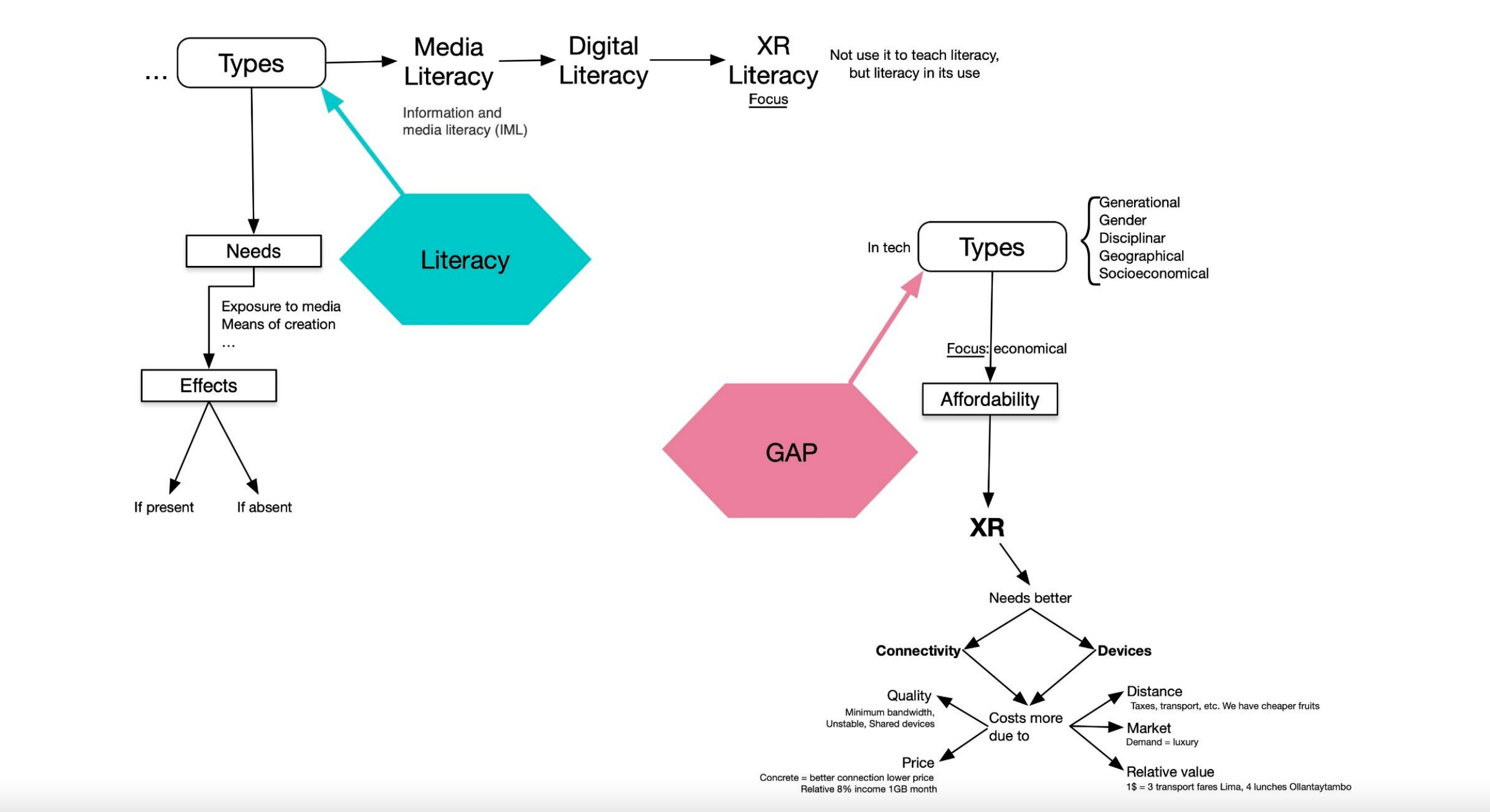
Image courtesy of Andres Leon-Geyer.
Although many around the world may proudly proclaim themselves connected to the internet when asked, it remains important to go beyond the surface and question the form which this connection might take.
While many may be able to access the internet through a laptop, is this the only laptop within their household? How often to they have access to it? If they don’t have a laptop and can only maintain an online presence by means of their phone, what limitations does this have concerning their use of much mainstream technology being developed today? Moreover, what percentage of their income does an internet connection cost?
Many individuals for whom these questions are relevant are most probably unable to access VR technology technology in the present day, at least in a manner which requires minimal sacrifice or consideration.
IN CIRCUMSTANCES SUCH AS THESE, WHAT MIGHT BE DONE TO INCREASE XR ACCESS AND LITERACY?
As Andres succinctly states, the solution is to “develop for otherness”. For humans, it is intuitive to initially consider and account for those with whom we have similarities, whether in financial status, geography, interests, health, or ability.
Should we begin to recall the spectrums upon which humanity resides and bear these differences in mind when conceptualising XR hardware and software, gulfs of accessibility stand considerably improved chances of narrowing over time.
As Monika Manolova clarifies at the beginning of her presentation, “when we provide XR tech, we need to bear in mind its users, the economic segments which will use them, and how they will impact our overall environment”.
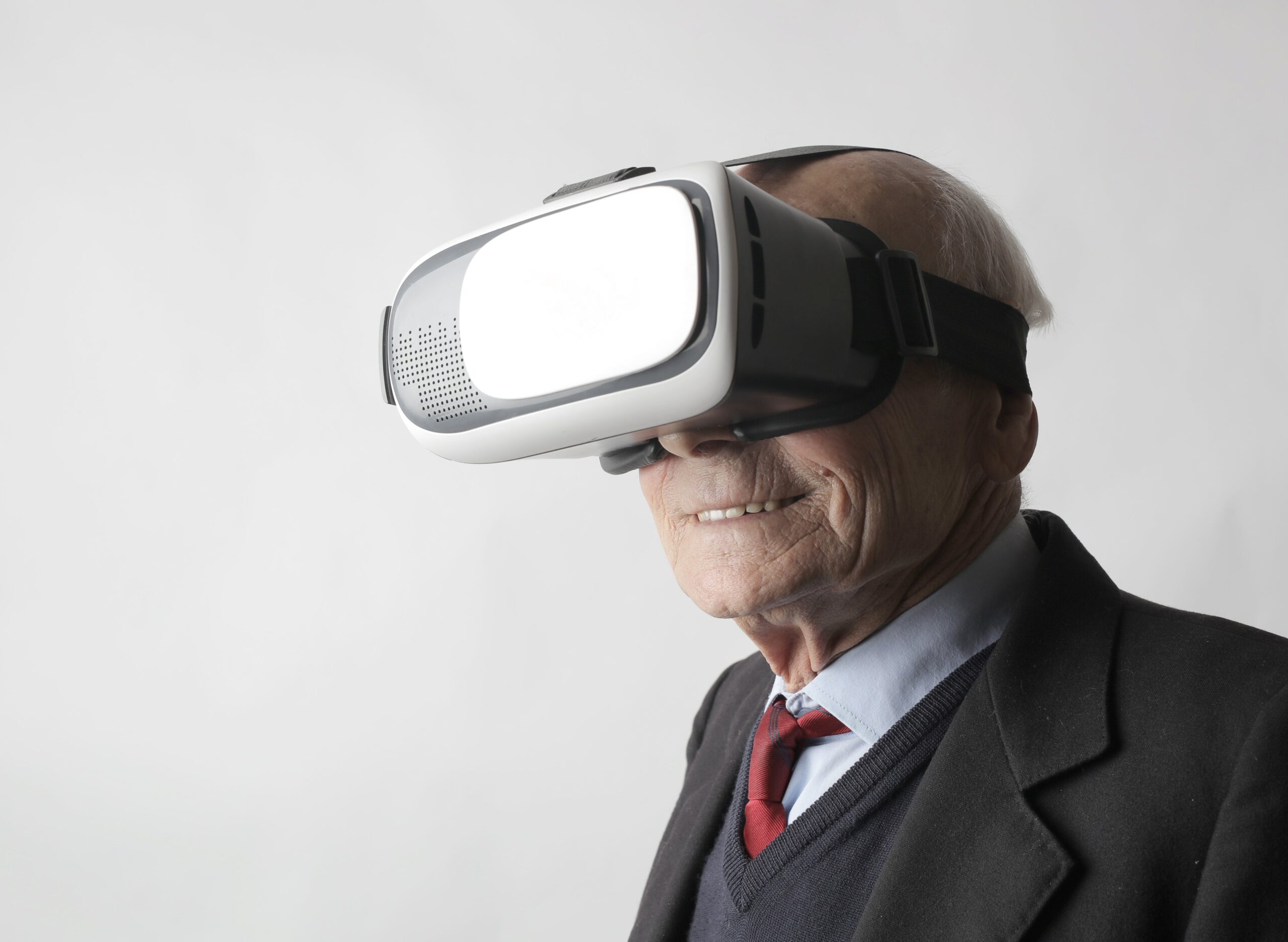
Image courtesy of Andrea Piacquadio.
With this in mind, she identifies two angles from which we might productively consider XR’s accessibility:
- User-centric: user interaction, paths for access, future potential as a means of communication
- Environmental: how XR impacts cities with Digital Twins, the distribution and storage of goods
Throughout this Meetup, she concentrates primarily upon the former, user-centric perspective, highlighting two organisations which she believes particularly notable in this arena.
XR SAFETY Intelligence (XRSI)
This project aims to develop standards for XR safety within the United States. Although many potential XR issues such as the tracking of users’ facial expressions have little chance of a quick-fix solution, there remains much which can be done with sufficient initiative taken. With this in mind, the XR Safety Intelligence has developed a number of guardrails and tools which aim to protect users according to age group, with children and the elderly particularly focalised.
WORLD METAVERSE COUNCIL
This organisation introduces itself as “the first world body bringing metaverse creators, developers etc together globally. We aim for a world where humans and their avatars enjoy freedom of speech and freedom from fear and want. Also, we seek to promote the development of friendly Relations between metaverses and to form a common standard for metaverses everywhere”. Much like the XR Safety Initiative, the World Metaverse Council strives to advance XR’s positive aspects, balancing this with acknowledging the risks of the technology as necessary.
As Monika continues in her discussion of organisations’ attempts to increase XR’s accessibility and safety, certain key factors once again emerge: digital literacy, the generational gap, and technological exposure.
CONCLUSION
When one talks of the generational gap in relation to technology, one often thinks of the aforementioned concept of developing for ‘otherness’ and, consequently, demographics such as the elderly. Within the context of XR and AI, however, it remains essential to maintain a simultaneous focus upon the youth.
Across high schools in much of the world today, many young people are no longer able to fully distinguish interactions in the physical realm from those taking place online. Over the coming decades as XR likely becomes a prominent tool for communication, the extent of this assimilation will only increase and the consequences will be significant.
XR’s increased prominence in daily life will broaden greatly the already present gulf between those with access to high-level technology and those without. It will do so not only in terms of socialising capacity but also, fundamentally, employability and financial status. With this being the case, the importance of developing for otherness, whether geographic, socio-economic, or health must not be understated. As we progress with XR’s doubtlessly exciting and likely radical development, we cannot forget to reflect and adapt.
** If you are an XR ERA Member and would like the link and password to access the live recording of this Meetup, please don’t hesitate to email us at xrcommunity@llinc.leidenuniv.nl.

